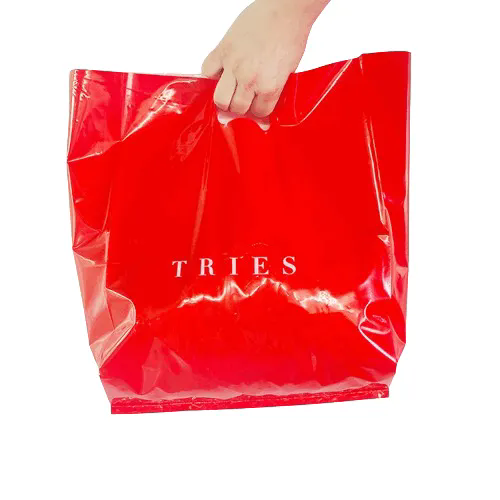Understanding Perforated Plastic Bags – Frequently Asked Questions
2024-11-04
Perforated plastic bags are widely used across different industries and for various purposes, from food storage to packaging delicate items. These bags feature small holes or perforations, which provide unique benefits. In this Q&A-style blog, we’ll cover everything you need to know about perforated plastic bags, so you can determine if they’re the right choice for your needs.
What is a perforated plastic bag?
A perforated plastic bag is a plastic bag that has small holes or slits throughout its surface. These perforations allow for ventilation, airflow, or moisture release, depending on the intended use. Perforated plastic bags are commonly found in food packaging, medical supplies, and other areas where controlled airflow is necessary to preserve the contents.
Why are perforated plastic bags used in food packaging?
Perforated plastic bags are popular in food packaging because they allow fresh produce, such as fruits, vegetables, and baked goods, to "breathe." The small holes prevent moisture from building up, reducing the risk of mold or spoilage. For example, bakeries often use perforated bags to keep bread crusty, while still maintaining the freshness inside.
How are the holes in perforated bags made, and do they affect bag strength?
The holes in perforated bags are typically created by a machine that punctures the plastic during the manufacturing process. The size and pattern of the holes can be adjusted to meet different needs. While the perforations slightly reduce the bag's overall strength, most perforated bags are designed to hold their contents securely without tearing. For applications that require additional durability, thicker plastic materials can be used.
Are there different types of perforations?
Yes, perforations come in various sizes, shapes, and patterns depending on the intended use. Some bags have micro-perforations (tiny holes) that allow minimal airflow, while others feature larger perforations for increased ventilation. For instance, micro-perforated bags are ideal for delicate vegetables, whereas bags with larger holes work well for heavy produce like potatoes.
What are some common uses for perforated plastic bags outside of food storage?
Perforated plastic bags are incredibly versatile. Besides food packaging, they are used in industries like healthcare, where they may hold medical supplies that need airflow to prevent moisture buildup. In retail, these bags are sometimes used for packaging clothes to prevent the accumulation of static. They’re also popular for gardening supplies, where plants or soil need controlled ventilation.
Are perforated plastic bags eco-friendly?
While plastic itself is not biodegradable, many manufacturers are moving toward eco-friendly materials or biodegradable options. Recycled plastic, biodegradable plastic, and compostable materials are increasingly available. Using perforated bags with a longer lifespan or opting for bags made from eco-friendly materials can help reduce their environmental impact. Reusing and recycling the bags whenever possible also supports sustainability.
Can perforated plastic bags be used for freezer storage?
Generally, perforated bags are not ideal for freezer storage because the holes allow air and moisture to pass through, which can lead to freezer burn. For freezing, it’s best to use airtight, non-perforated bags or wrap food in plastic wrap or aluminum foil before placing it in a perforated bag to add a layer of protection.
How do I choose the right perforated plastic bag for my needs?
Consider the following factors:
- Perforation Size: Smaller holes are ideal for delicate items, while larger perforations work well for items that need more airflow.
- Bag Material: Check if the plastic is food-grade if you’re storing food, or durable enough for heavy-duty use.
- Purpose: For storage, look for micro-perforated bags, and for retail or display, consider aesthetic options with clear visibility.
- Eco-friendliness: If sustainability is important to you, choose biodegradable or recycled plastic options.
Are perforated plastic bags reusable?
Yes, depending on their durability, perforated plastic bags can be reused multiple times. For food storage, it’s important to clean and dry them thoroughly after each use to prevent contamination. If you’re using them for non-food items, such as clothing or gardening supplies, they can be reused many times as long as they remain in good condition.
Can I make my own perforated plastic bags at home?
It’s possible to create your own perforated bags by carefully puncturing holes into a plastic bag with a pin or fine needle. However, creating uniform perforations that maintain the bag’s strength can be challenging. If you need a professional-grade perforated bag for specific purposes, it’s usually best to buy them from a reliable manufacturer to ensure quality and durability.
Do perforated plastic bags protect against moisture?
Perforated bags can help control moisture by allowing excess humidity to escape. This is particularly useful for produce and other items prone to moisture buildup. However, because they allow airflow, these bags do not prevent moisture from entering, so they are not recommended for storing items that need complete protection from moisture or humidity.
Are perforated plastic bags safe for packaging clothing?
Yes, perforated plastic bags are often used in the garment industry. The perforations prevent static buildup and allow air to circulate, which keeps fabrics fresh during storage and transportation. They’re commonly used for packaging garments that might be on display in retail, as they allow customers to see and feel the product without unwrapping it.
Perforated plastic bags are a versatile solution for various storage and packaging needs. From keeping produce fresh to allowing airflow in packaged clothing, they offer many benefits. When choosing perforated plastic bags, consider the type of items you’re storing and the level of ventilation they require to make the best choice for your needs.



